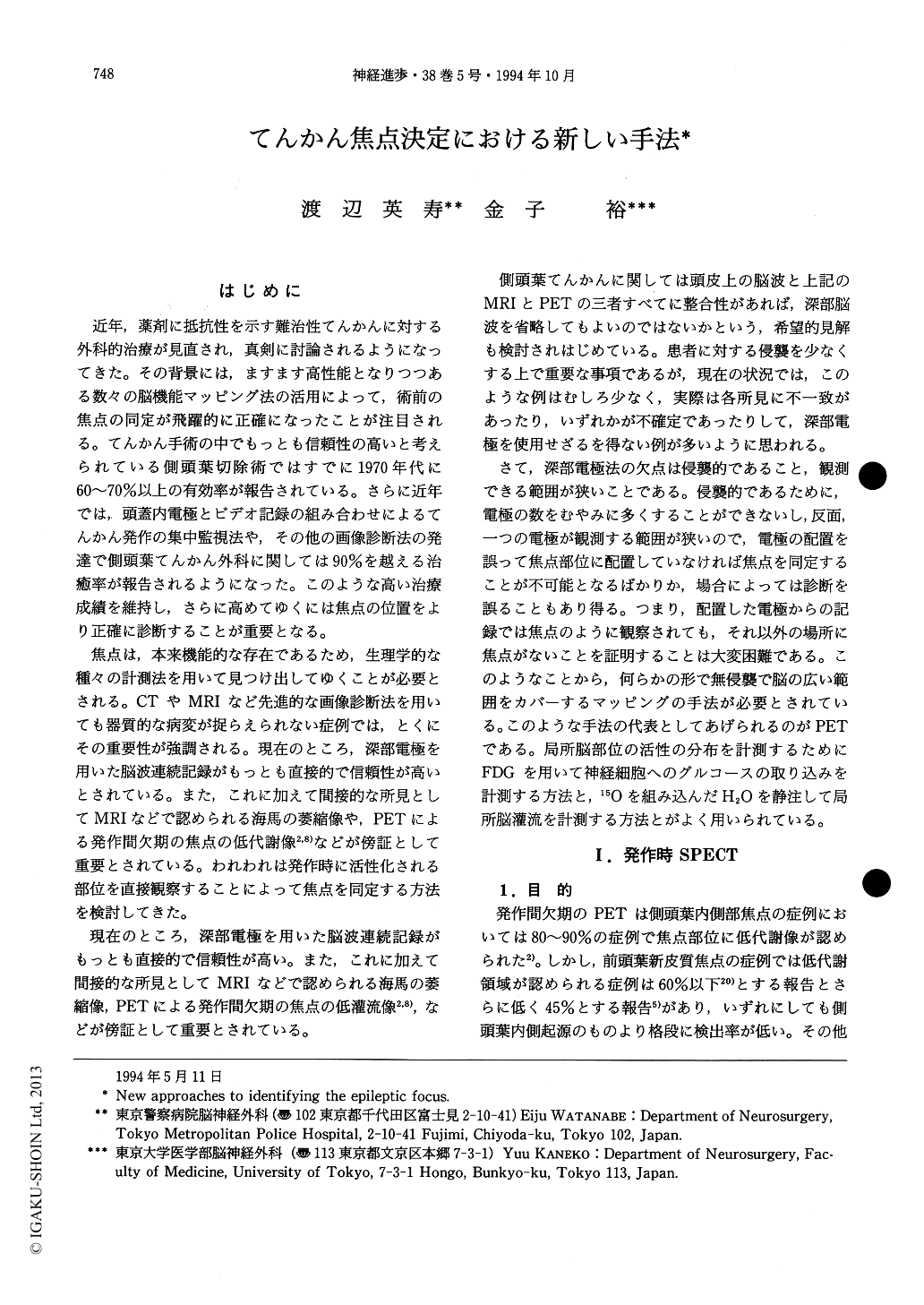Japanese
English
- 有料閲覧
- Abstract 文献概要
- 1ページ目 Look Inside
はじめに
近年,薬剤に抵抗性を示す難治性てんかんに対する外科的治療が見直され,真剣に討論されるようになってきた。その背景には,ますます高性能となりつつある数々の脳機能マッピング法の活用によって,術前の焦点の同定が飛躍的に正確になったことが注目される。てんかん手術の中でもっとも信頼性の高いと考えられている側頭葉切除術ではすでに1970年代に60~70%以上の有効率が報告されている。さらに近年では,頭蓋内電極とビデオ記録の組み合わせによるてんかん発作の集中監視法や,その他の画像診断法の発達で側頭葉てんかん外科に関しては90%を越える治癒率が報告されるようになった。このような高い治療成績を維持し,さらに高めてゆくには焦点の位置をより正確に診断することが重要となる。
焦点は,本来機能的な存在であるため,生理学的な種々の計測法を用いて見つけ出してゆくことが必要とされる。CTやMRIなど先進的な画像診断法を用いても器質的な病変が捉らえられない症例では,とくにその重要性が強調される。現在のところ,深部電極を用いた脳波連続記録がもっとも直接的で信頼性が高いとされている。また,これに加えて間接的な所見としてMRIなどで認められる海馬の萎縮像や,PETによる発作間欠期の焦点の低代謝像2,8)などが傍証として重要とされている。われわれは発作時に活性化される部位を直接観察することによって焦点を同定する方法を検討してきた。
The identification of the epileptic focus is one of the most important procedure in surgical manage-ment of drug resistant epilepsy. An intensive video-EEG monitoring is considered to be the most reliable method to recognize the epileptic focus, although it is invasive and time consuming method. Due to the development of physiological brain mapping techniques, less invasive methods have been invented to detect epileptic focus. PET scan is becoming a standard method for this purpose, and it is revealed to be reliable especially for temporal lobe epilepsy (detectability : 70-80%), but less reliable in extratemporal cases.

Copyright © 1994, Igaku-Shoin Ltd. All rights reserved.


